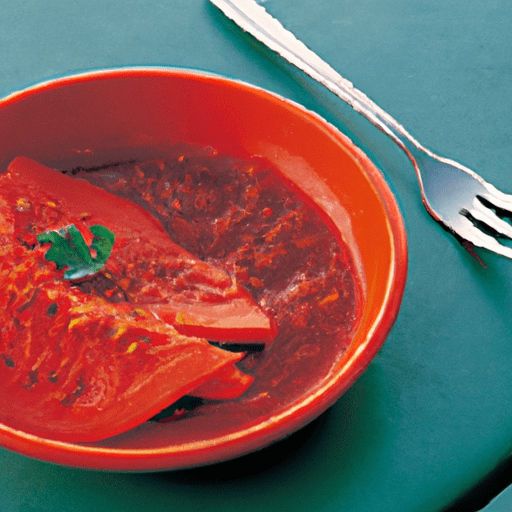Discover the Exotic Paradise of Curaçao: A Culinary Delight
If you are a fan of vibrant and exotic flavors, then Curaçao is a culinary gem you cannot afford to miss. This tiny Dutch Caribbean island, nestled in the crystal-clear waters of the Caribbean Sea, is not only known for its stunning beaches and rich culture but also for its mouthwatering cuisine. So, let’s take a deep dive into the enchanting world of Curaçao’s culinary delights.
A Taste of Paradise
Curaçao boasts a unique blend of flavors influenced by its Dutch colonial heritage, African, Latin American, and Indonesian influences. The island’s cuisine is characterized by its explosion of tropical flavors, aromatic spices, and a touch of heat. It’s truly a crossroads of taste, where the sweet and tangy dance with the spicy and savory.
Common Uses in Cooking
One of the most famous culinary exports of Curaçao is the liqueur that shares its name. Curaçao liqueur, traditionally made from the dried peels of the laraha fruit, is a key ingredient in many cocktails like the Blue Margarita or the Curaçao Punch. Its distinct blue color adds a touch of magic to any drink.
In traditional Curacaoan cuisine, seafood takes center stage. Freshly caught fish, such as red snapper or mahi-mahi, are often marinated in a vibrant blend of citrus juices, garlic, and local herbs and then grilled to perfection. These seafood delights are commonly served alongside funchi, a cornmeal-based side dish similar to polenta, and complemented by a refreshing avocado and tomato salad.
Nutritional Value
Curaçaoan cuisine celebrates fresh and locally sourced ingredients, enabling a wholesome and nutrient-rich dining experience. The emphasis on seafood offers a wealth of lean proteins and essential omega-3 fatty acids, promoting heart and brain health.
Moreover, the incorporation of tropical fruits and vegetables provides a plethora of vitamins, minerals, and antioxidants. Plantains, yams, and sweet potatoes add a dash of fiber, while bursts of tropical fruits like papaya, guava, and passion fruit deliver a boost of vitamins and a touch of exotic sweetness.
Historical Significance and Fascinating Facts
Curaçao’s captivating culinary heritage stems from its complex history. The island was a major trading hub during the colonial era, welcoming merchants from around the globe. These diverse influences enriched the local cuisine, creating a fusion of cultures on the plate.
Apart from its culinary delights, Curaçao is also home to the oldest continuously operating distillery in the Caribbean, the National Historic Landhouse Chobolobo. This is where the famous Blue Curaçao liqueur is still produced, following a recipe handed down through generations.
Intriguingly, the laraha fruit used for the liqueur is not naturally found in Curaçao. It is a variety of bitter orange that was imported from Valencia, Spain, but adapted and thrived on the island, resulting in a unique citrus flavor not found anywhere else in the world.
Experience Curaçaoan Cuisine and Indulge in Paradise
Curaçao is a true paradise for food enthusiasts, offering a sensory journey through the flavors and history of the Caribbean. Whether you are sipping a refreshing Curaçao cocktail, enjoying a succulent grilled fish, or exploring the vibrant markets, every bite is a celebration of tradition and culture.
So, if you’re seeking a culinary adventure like no other, pack your bags and get ready to immerse yourself in the gastronomic wonders of Curaçao. Your taste buds will thank you for this unforgettable experience in paradise!
Note: Please drink responsibly and only consume alcoholic beverages if you are of legal drinking age in your country.
Curaçao
- Curaçao is a liqueur that originated on the Caribbean island of Curaçao. It was first developed by a pharmacist named Lucas Bols in the 19th century.
- The liqueur is made from the dried peels of the laraha citrus fruit, which is native to Curaçao. The laraha fruit is a bitter and inedible relative of the sweet Valencia orange.
- The peels of the laraha fruit contain aromatic compounds called essential oils, which give Curaçao its distinct citrus flavor and fragrance.
- Curaçao comes in several colors including blue, orange, and clear, each with a different flavor profile. The blue color is achieved using food coloring and has no impact on the taste.
- Historically, Curaçao has been used in cocktail recipes, such as the famous Blue Margarita and Blue Hawaii. It is also commonly used to add flavor and color to desserts and baked goods.
- From a nutritional standpoint, Curaçao is primarily consumed in small quantities as a flavoring agent. As a result, its nutritional impact is minimal.
- The bitterness of Curaçao can aid digestion by stimulating the production of digestive enzymes in the body.
- Curaçao has cultural and historical significance as a traditional liqueur from the island of Curaçao. It is an important part of the island’s culinary heritage and a popular souvenir for visitors.
- The Curaçao liqueur produced today is available in many countries and is often used as a versatile ingredient in various cocktails, desserts, and culinary creations.




Use the share button below if you liked it.
It makes me smile, when I see it.